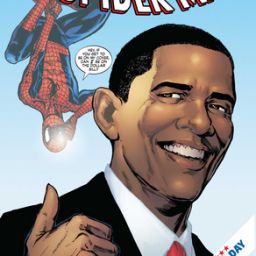
You have likely heard — or read the Serenity prayer, in an AA meeting, on a poster, or in a self-help book.
But now Fred Shapiro, a law librarian at Yale and author of the Yale Book of Quotations, has called into question the common knowledge about the authorship of the prayer in an article in the Yale Alumni Magazine. (News coverage by Laurie Goodstein in both the New York Times and the International Herald Tribune)
He says that while Reinhold Niebuhr is the acknowledged author, searching through historical documents has led to two possibilities:
The extensive pre-1943 documentation I have found, none of which refers to Reinhold Niebuhr, is subject to two interpretations. One is that Niebuhr wrote the Serenity Prayer in the early or mid-1930s, it quickly disseminated through religious and other circles with the author’s identification largely forgotten, and the database occurrences are traces of that dissemination….
I think the second interpretation is more likely: that the prayer was indeed “spooking around for years” and that Niebuhr unconsciously adapted the Serenity Prayer in the early 1940s from already-circulating formulations of unknown origin.
In response, Reinhold Niebuhr’s daughter, Elisabeth Sifton, and author of The Serenity Prayer: Faith and Politics in Times of Peace and War states
To decide on a text’s authorship, one needs to understand its meaning and its historical context, and I am not sure Mr. Shapiro does. To me, his new discoveries simply suggest that in the years before World War II, Reinhold Niebuhr’s voice reached many more American churches and organizations than we previously realized …
Mr. Shapiro’s working premise for his research on the Serenity Prayer seems to be that we must find out just who first spoke or wrote it in the public record, because that person is more likely to be — or to be near — its true author. But, as I’ve said to him before, this is not necessarily the right way to go about looking for prayer authors. Prayers are presented orally, circulate orally, and become famous orally long before they are put on paper. Pastors and congregants use them in worship, recall and even misremember them, think about them for years before they are printed. That is why common, i.e., shared, use is one criterion for establishing a text, no matter who may have originated it — though that still matters.
The authorship debate about the Serenity prayer has remained reasonably friendly by remaining academic, but the uncertain authorship of Footsteps has included many claimants to original authorship.
In an article in Poetry Foundation Magazine, Rachel Aviv discusses many of the various authorship claims to Footsteps, the well-known prayer poem that has been widely reprinted. The claims of several people who claim to be the lone author contrast with “popular knowledge” that the author is anonymous.
Aviv states
Carl Jung argues that it’s impossible to know for certain which ideas are one’s own. “Our unconsciousness . . . swarms with strange intruders,” he writes. He accuses Nietzsche of unwittingly copying another’s work, and urges all writers to sift through their memories and locate the origin of every idea before putting it to paper: “Ask each thought: Do I know you, or are you new?”
In the realm of Christian poetry, the process of distinguishing which ideas are original is significantly harder—the same body of collective epiphanies has been passed down for years. When artists open themselves up to the inspiration of the Lord, it’s not surprising that sometimes they produce sentences that sound as if they’ve been uttered before.
Focusing on singular authorship in these circumstances seems wrong — whether the other contributor is direct divine inspiration or indirect divine inspiration through the words of others. Perhaps these works did indeed have only one author — in the sense of expressing those ideas using those words. However, both have entered the public cultural experience without such attribution.
Once again, the difficulty in proving authorship of common cultural items is a reason to limit copyright terms. Whether it is these prayers or Happy Birthday to You, when shared cultural experiences become common, we treat them as if they already are in the public domain.


